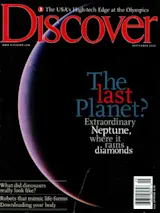"Celebrity sells" is just as much of a truism at zoos as it is at movie theaters. In order to draw crowds and swell coffers, zoos typically give giant pandas, polar bears, tigers, gorillas, and other celebrity creatures the starring roles and cast the lowly, more common critters in minor parts. The approach may be lucrative, but Ron Kagan, director of the Detroit Zoological Institute, believes it gives a skewed view of the animal kingdom. "The real story is not in the big cuddlies— it's in the creepy crawlies," Kagan says. "We have a responsibility to market what's important to nature."
Creepy crawlies are the marquee attraction at the Detroit Zoo's brand new National Amphibian Conservation Center, a $6.1 million, 12,000-square-foot facility that highlights the critical ecological role played by frogs and their cousins— toads, newts, salamanders, and the little-known wormlike caecilians. Amphibians live both on land and in water ...














